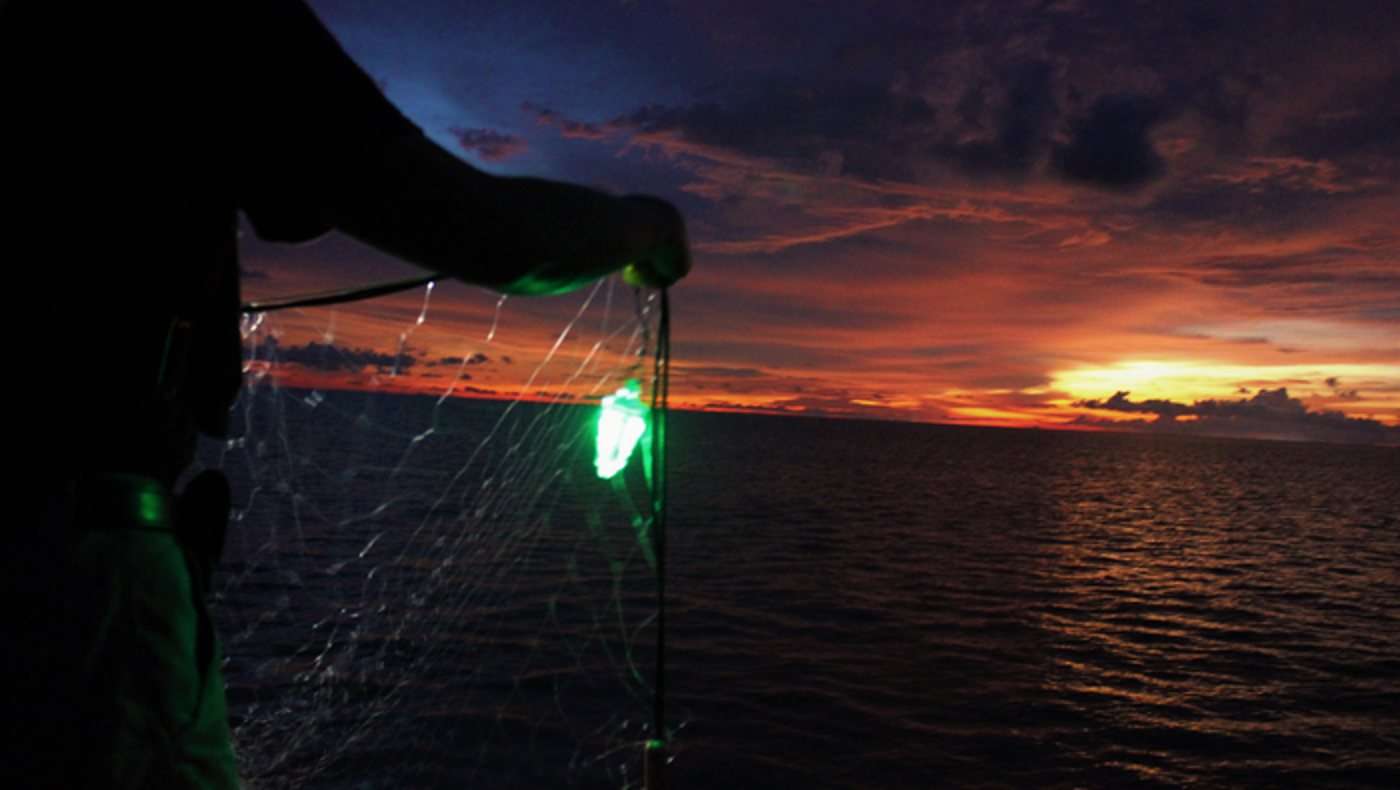500% Boom in Numbers of Eggs Laid By Breeding Green Sea Turtles
A breeding ground for green turtles has seen a 500 percent boom in the numbers of clutches of eggs laid since hunting them was banned. It's in the Seychelles.

Marine biologists have found that $8 green LED lights affixed to fishermen's gill nets were enough to dissuade huge amounts of sea animals like turtles, rays, and sharks from ever swimming toward the nets.
Originally tested by the National Oceanic and Atmospheric Administration on sea turtles off the coast of Hawai'i, they are proving even more effective on squid and the elasmobranch family, which contains sharks and rays.
Gill nets are indiscriminate, and fishermen end up catching marine life without meaning to, after they get entangled and sometimes killed in the nets.
Jesse Senko, a biologist at the State University of Arizona's School of Life Sciences, found that just a few green lights reduced the amount of elasmobranch and squid caught in fisherman's nets by 95% and 81% respectively.
The endangered loggerhead sea turtle also fared well, with the green glowing nets reducing their incidence of bycatch by 51%.
Furthermore, even non-game species of fish steered clear of the green light more than in the unlit control nets. Overall, the lit nets reduced all bycatch by 63%.
"We were stunned with our findings," one researcher told Reuters.
In their study published in Cell, Senko and the rest of the research team compared 5,000 lit nets to 5,000 unlit nets off the coast of the Baja Peninsula in Mexico, where several species of sharks and rays are declining due to bycatch, including the devil and manta rays.
Somehow, even though regular non-game fish were reduced, there was no difference statistically in the amount of game species caught in the lit and unlit nets, meaning there was no change to fishermen's income.
"Regardless, the increased operational efficiency and reduction in total bycatch could justify the costs to fishers that convert to illuminated nets. In cases of high biodiversity and conservation importance, governments and NGOs could subsidize their adoption," Senko wrote.
"In other gillnet fisheries, net illumination has been estimated to cost as little as $16 to $34 to prevent a sea turtle bycatch event. We encourage conservation practitioners, fishery managers, and other stakeholders to work with industry to develop new technologies, domestically manufacture LED lights, and seek new methods to increase efficiency and availability."
One of the unexpected and rather cool reactions of reducing this bycatch was the amount of time it took to haul in and untangle nets, saving an average of 63 minutes per trip.
SHARE This Good News From the Ocean With Your Buddies…
Be the first to comment